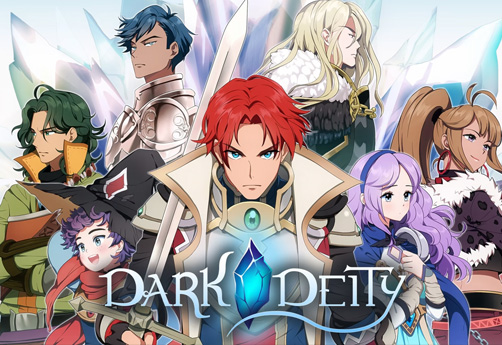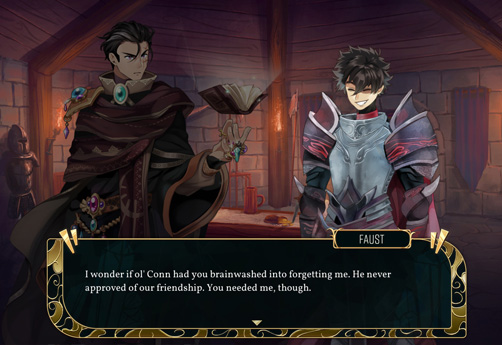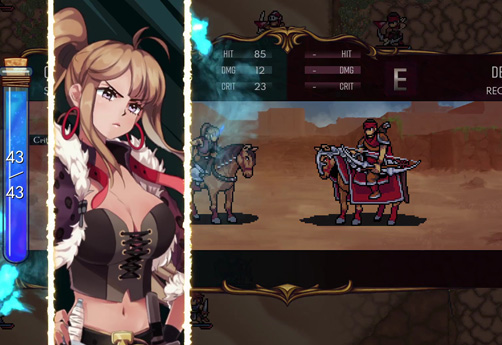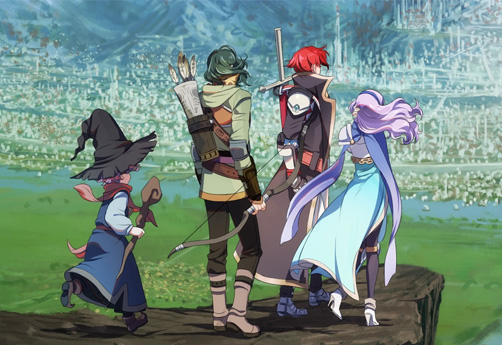Dark Deity Game Review

Endearing characters to invest in, deep combat, and unit development mechanics help keep the fights fresh, and vibrant retro-inspired visual style.
Can feel derivative of Fire Emblem, an unremarkable yet convoluted story that won’t hold your attention, limited gameplay loop can become monotonous before long.
In just barely differentiating itself from titles that inspired it, Dark Deity produces a charming and complex yet flawed SRPG that strategy fans will enjoy.
About The Game
There’s a fine line between paying homage to a classic game and replicating it to milk its success. To say that Dark Deity is heavily inspired by Fire Emblem is an understatement, but it refreshes the formula of this classic series to create a unique experience and identity. The result is a solid but not standout SRPG that Switch owners are eager for turn-based tactical goodness and should look closely. The Dark God’s machinations can affect anyone who has ever feared being drafted. It begins with your king launching an ill-prepared military attack against another nation. Needing an army, he recruits students for the prestigious military academy even in the years leading up to his graduation. A group of student soldiers becomes involved in a war that eventually comes to conflict between a mysterious figure who hunts magical artifacts known as the Aspects of Eternity.
This story unfolds predictably and quickly becomes unnecessarily complicated. Each of the 28 chapters discusses current events, gets to know each other, and centers around a struggle that begins and ends with a minute-long character working to achieve a goal. You’ll see it evolve to the beat of the story, and its dynamic twists include romance, conflict, and intrigue to heat things up. Witnessing hundreds of “attachment” conversations in the pre-battle base camp allows us to delve deeper into their relationship, but researching these and increasing attachment levels does not add anything to the battle. There are no benefits.
Most of the cast is diverse and relatable, and we found some of them to be as easy to invest in as Fire Emblem: Three Houses’ crew. Knowing their backstories and motivations is one of the most fun things about Dark Deity. Thirty playable characters is a bit overwhelming – the in-game synopsis makes such a chaotic cast manageable – and, while some found it painfully tropic, they’re well represented in the story. It plays a key role in allowing the game, albeit not a great script.




Game Features
Even if the story of the Dark God doesn’t remind you of Fire Emblem, its combat and progression mechanics do. Combat is turn-based based on retro-hued grid-based maps. See the field, give orders from a top-down perspective, zoom in on units, and enjoy stunning pixelated scenes trading blows with enemies. Chapters impose specific objectives, but almost all boil down to clearing out enemy fields or reaching heavily defended fields.
Understanding the game’s twist in the classic weapon triangle is key to success in combat. Each comes pre-baked with unmodifiable armor and attack damage types. Depending on the unit’s attack type against enemy armor, its attacks deal more or less damage. There are 4 types of armor types and 9 types of damage types, so it is troublesome to learn compatibility. Thankfully, Dark Deity uses color-coded arrows to let you know if your attack grants a bonus or reduces damage. These arrows have driven many of my combat decisions, but have kept my team afloat in many enemy encounters on all but the most relaxed difficulty levels.
He is one of the few other variations in Fire Emblem, each unit has four weapons, and can switch weapons during battle without penalty. Each has different power, accuracy, and critical chance, and you can upgrade your weapon up to 7 times by redeeming tokens obtained from the field or vendors. Different weapons emphasize certain stats over others, allowing you to specialize in each character’s fighting style. For example, you are free to choose to sacrifice base damage to maximize your chances of a dagger critical hit or sacrifice other metrics for consistent performance by focusing on accuracy.
Dark Deity does a poor job of explaining its intricate weapon system, but fans of in-depth character customization will love the freedom it offers. You can also get sides. This is one of the most notable additions to the game, each allowing him to change one or two stats, provide passive buffs to him, or enhance certain abilities. increase. The aspect was never groundbreaking, but it smoothed out character imperfections and gave us more control over our team’s performance. Speaking of customization, we start Dark Deity with access to her six archetypal classes. Each class unlocks her 4 prestige class promotions at level 10, and 4 more prestige class promotions at level 30. Ultimately, dragoons, knights, and battle-he will have access to 54 classes covering the full gamut of standard fantasy cuisine, from mages to pyromancers to thieves to clerics. Each class has different stats, movement, attack range, damage, and armor types. Each of the six starter classes has an active ability that can be unleashed in combat, while the advanced class retains the base class’s active ability and learns two passive skills. Each party member comes to you as a starter class, but you have full control over their promotion.
The impressive range of classes encourages tinkering with different strategies and playstyles. Unless you’re on the lookout, it means you can have a hard time distinguishing them from the other five variants or six different warrior types of Cleric at your disposal. It has a 16-bit aesthetic, but many are indistinguishable. Balance issues also plague the class. Mounted melee fighters struggle to keep up in the mid-game, and odd stat distributions for some classes render them nearly useless (looking at Battlemage). The experience was suspiciously reminiscent of Three Houses, but I realized that they were saying “just one more round” anyway. The SRPG also dropped Fire Emblem’s punitive permanent death system.
His loop was coveted. An explorable overworld, side quests, and other RPG features are welcome additions to diversify the pace of the game, but they’re all lacking. Dark Deity’s graphics may not be for everyone, but it helped me immerse myself in this world after the story and combat got boring. Units appear as living 2D pixels on the field, and 16-bit attack animations are reminiscent of his SNES days. The pixel art isn’t as detailed, but it oozes personality and is sure to fall in love with anyone who appreciates its retro aesthetic. Story scenes unfold through beautifully hand-drawn visual novel stills that liven up the drama and make up for the lack of high-fidelity cutscenes. This understated graphic style shouldn’t be too demanding on my Switch, so I was surprised to lose about a minute of loading screens between battle scenes and story scenes.
Dark Deity’s soundtrack doesn’t break records, but it does offer a collection of light, high-fantasy tracks that match the mood. Unfortunately, the actors only voice some of the main story and battle scenes, and the game displays all other dialogue via text boxes that define little of the cast’s personalities. Still, the strong voice acting that accompanies key scenes effectively conveys the emotions of the characters and sets the tone that Sword & Ax is aiming for.
Dark Deity is a title that doesn’t take too many risks, but nothing beats a small bet. His handful of innovations in the Fire Emblem formula has resulted in challenging, character-driven adventures that still have the potential to create fans of their own. While the gameplay loop makes Dark Deity less recognizable, its lovable cast, deep combat, and customization system make it a force to be reckoned with in Switch’s crowded SRPG market.
Game Trailer
In order to have more insight into this game, you can watch this video from the following link:
You can visit the website of Dark Deity Game Review by Mr. Frog to understand the game more.


























































































































































